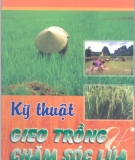TÀI LIỆU SỐ
- Quản trị kinh doanh (1944 )
- Tài chính - Ngân hàng (1370 )
- Công nghệ thông tin (1454 )
- Cơ khí - Tự động (986 )
- Kỹ thuật xây dựng (841 )
- KT Cơ - Điện - Điện tử (1191 )
- Kế toán - Kiểm toán (972 )
- CN Hóa học - Thực phẩm (948 )
-
Nông nghiệp - CN Sinh
(956 )
- Môi trường (629 )
- Du lịch - Việt Nam học (622 )
- Ngoại ngữ (487 )
- Kiến trúc - Mỹ thuật CN (299 )
- Luận văn - Báo cáo (772 )
- Y khoa (1309 )
- Môn học chung (674 )
- Kỹ năng mềm (308 )
Danh mục TaiLieu.VN
- Mẫu Slide Powerpoint
- Luận Văn - Báo Cáo (344720)
- Kinh Doanh Marketing (65512)
- Kinh Tế - Quản Lý (48934)
- Tài Chính - Ngân Hàng (55898)
- Công Nghệ Thông Tin (142209)
- Tiếng Anh - Ngoại Ngữ (47066)
- Kỹ Thuật - Công Nghệ (134345)
- Khoa Học Tự Nhiên (107174)
- Khoa Học Xã Hội (82451)
- Văn Hoá - Nghệ Thuật (54408)
- Y Tế - Sức Khoẻ (173915)
- Nông - Lâm - Ngư (62504)
- Kỹ Năng Mềm (29016)
- Biểu Mẫu - Văn Bản (27610)
- Giải Trí - Thư Giãn (51994)
- Văn Bản Luật (198854)
- Tài Liệu Phổ Thông (402015)
- Trắc Nghiệm Online (213578)
- Trắc Nghiệm MBTI
- Trắc Nghiệm Holland
Tài liệu nổi bật
Kết quả 781-792 trong khoảng 956
-
Lecture Molecular biology (Fifth Edition): Chapter 2 - Robert F. Weaver
Before we begin to study in detail the structure and activities of genes, and the experimental evidence underlying those concepts, we need a fuller outline of the adventure that lies before us. Thus, in this chapter and in chapter 3, we will fl esh out the brief history of molecular biology presented in chapter 1. In this chapter we will begin this task by considering the behavior of genes as molecules.
37 p ntt 20/04/2016 236 1
-
Lecture Molecular biology (Fifth Edition): Chapter 6 - Robert F. Weaver
Chapter 6 - The mechanism of transcription in bacteria. In this chapter we will focus on the basic mechanism of transcription. We will begin with RNA polymerase, the enzyme that catalyzes transcription. We will also look at the interaction between RNA polymerase and DNA.
55 p ntt 20/04/2016 259 1
-
Lecture Molecular biology (Fifth Edition): Chapter 3 - Robert F. Weaver
Chapter 3 introduce to Gene function. This chapter outlines the three activities of genes and provides some background information that will be useful in our deeper explorations in subsequent chapters. This chapter presents the following content: Storing information, replication, mutations.
44 p ntt 20/04/2016 244 1
-
Lecture Molecular biology (Fifth Edition): Chapter 4 - Robert F. Weaver
Chapter 4 review the fundamentals of gene structure and function, we are ready to start a more detailed study of molecular biology. The main focus of chapter will be the experiments that molecular biologists have performed to elucidate the structure and function of genes.
67 p ntt 20/04/2016 284 1
-
Lecture Molecular biology (Fifth Edition): Chapter 5 - Robert F. Weaver
Chapter 5 - Molecular tools for studying genes and gene activity. This chapter describe the most popular techniques that molecular biologists use to investigate the structure and function of genes. Most of these start with cloned genes. Many use gel electrophoresis. Many also use labeled tracers, and many rely on nucleic acid hybridization. We have already examined gene cloning techniques.
82 p ntt 20/04/2016 244 1
-
Lecture Molecular biology (Fifth Edition): Chapter 7 - Robert F. Weaver
In chapter 7 we will explore one strategy bacteria employ to control the expression of their genes: by grouping functionally related genes together so they can be regulated together easily. Such a group of contiguous, coordinately controlled genes is called an operon.
49 p ntt 20/04/2016 288 1
-
Lecture Molecular biology (Fifth Edition): Chapter 9 - Robert F. Weaver
Chapter 9: DNA-protein interactions in bacteria. The main contents of this chapter include all of the following: The λ family of repressors, the trp repressor, general considerations on Protein–DNA interactions, DNA-binding proteins: action at a distance,...and other contents.
21 p ntt 20/04/2016 267 1
-
Lecture Molecular biology (Fifth Edition): Chapter 12 - Robert F. Weaver
The main contents of this chapter include all of the following: Categories of activators, structures of the DNA-Binding motifs of activators, independence of the domains of activators, functions of activators, interaction among activators, regulation of transcription factors.
53 p ntt 20/04/2016 288 1
-
Lecture Molecular biology (Fifth Edition): Chapter 10 - Robert F. Weaver
In chapter 6 we learned that bacteria have only one RNA polymerase, which makes all three of the familiar RNA types: mRNA, rRNA, and tRNA. In this chapter we will see that three distinct RNA polymerases occur in the nuclei of eukaryotic cells. Each of these is responsible for transcribing a separate set of genes, and each recognizes a different kind of promoter.
31 p ntt 20/04/2016 283 1
-
Lecture Molecular biology (Fifth Edition): Chapter 8 - Robert F. Weaver
Chapter 8 - Major shifts in bacterial transcription. In this chapter, students will be able to understand: Sigma factor switching, the RNA polymerase encoded in phage T7, infection of E. coli by phage λ,...and another contents.
40 p ntt 20/04/2016 273 1
-
Lecture Molecular biology (Fifth Edition): Chapter 11 - Robert F. Weaver
Chapter 11 - general transcription factors in eukaryotes. Eukaryotic RNA polymerases, unlike their bacterial counterparts, are incapable of binding by themselves to their respective promoters. Instead, they rely on proteins called transcription factors to show them the way. Such factors are grouped into two classes: general transcription factors and gene-specifi c transcription factors (activators). In this chapter we will survey the general...
38 p ntt 20/04/2016 291 1
-
Lecture Molecular biology (Fifth Edition): Chapter 13 - Robert F. Weaver
Chapter 13 - Chromatin structure and its effects on transcription. In this chapter, we will look at the crucial relationship among activators, chromatin structure, and gene activity. This chapter presents the following content: Histones, nucleosomes, chromatin structure and gene activity.
40 p ntt 20/04/2016 273 1
Đăng nhập

























